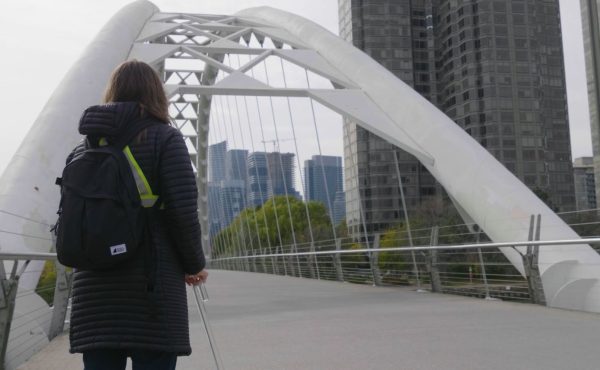

Following plenty of blog chatter last week around the demise of “Five Dollar Fridays†at the ROM (and accompanied by traumatic flashbacks about the demise of “Free Fridays†in the months prior) the Toronto Public Library is gearing up to announce a new-to-Toronto museum pass program this Wednesday. Though full details aren’t yet available, it appears the program will function by allowing a small number of free museum passes (think less than 200 total) for weekly first-come, first-served pickup at “high-needs area†library branches. Similar programs also operate in Ottawa and Boston.
Also, to keep free hours per week roughly the same as in the past, the ROM has changed its “60 minutes prior to close is free†to “90 minutes prior to close is free.â€
While the library pass program is definitely a great idea, I harbour some fear that it will be used as a rationale by new, “house-poor†museums to further curtail in-house public access programs. The Canadian Museum of Civilization participates in a library access program and has free Tuesday nights and has a graduated admission scheme the rest of the time so that adult visitors can pay just $10 — a bargain compared to the ROM’s $20 — to get through the door.
In yesterday’s Sunday Star, I argued that museums democratizing access worldwide use a combination of public access techniques, not just a few. Because space there was limited, I thought I’d list a few more details and points to ponder here:
*ROM public access policies promise in writing to reduce economic barriers to admission to the “greatest extent possible.â€
*Free admission to the Baltimore Museum of Art and Walters Art Museum (also in Baltimore) was initiated in October 2006 through Free Fall Baltimore, an innovative citywide program designed to make the arts available to everyone. Could we ever establish one here?
* The federal policy of free admission has been one of the British government’s most popular measures. It has generated an additional 29 million visitors for the 14 institutions which previously charged. On average, visits are up 75%. The biggest winners have been the Victoria and Albert Museum, where attendance is up 138%, and National Museums Liverpool, which has seen a rise of 118%. (Thanks to Michelle Kasprzak for the link.)
* “I view an accessible museum admission cost as part of society’s responsibility to itself and thus think $20 at the door is expensive. We should be supporting our institutions from public funds sufficient to allow reasonable entry prices. Or that our institutions should set its budgeting priorities to allow for reasonable access.” —Lynne Teather, professor of Museum Studies, University of Toronto, and author of The Royal Ontario Museum: A Prehistory, 1830-1914
* “Museum admission fees are clearly most hurtful to those least able to afford them. Think of how the public and the politicians would explode if just the downtown public library were to establish an admission fee. It is about time we made visiting an art museum as easy as visiting a library.” —Charles M. Weisenberg, former public relations director of the Los Angeles Public Library
* “The high entrance fees imposed by some New York City art museums will not only deprive museums of future patrons, but will also deprive all of us of future artists, since children who might become great artists need to spend a great deal of time studying art in museums. Unless we permit free entrance, especially on weekends, we are diminishing the very talents that museums will need for their survival.” —Letters Section, New York Times, April 18, 1999
Photos from Free Fall Baltimore


5 comments
I’m a painter and though I am not poor, I can’t afford twenty bucks to go to the ROM. I may go ninety minutes before closing though.
Is the ROM definitely on board with the library’s pass program? As of May 14 (item 13a), the AGO, Textile Museum, Gardiner, and Bata Shoe Museum were in but the Science Centre and ROM were still discussing.
ROM Friday nights used to be well publicized, and even had special events. The “last 90 minutes free” policy is a bit buried in the fine print, which is discouraging.
Also discouraging is the quote in your Star article that the ROM has to “make sure we run like a business”. They’re not a business — hiring top scholars to display fragile old stuff in grand buildings is not at all a recipe for making money — they’re a government institution, whose value should be measured by their impact on the community.
Great post, Leah … lots of interesting quotes. Anyone know if the last 90 minutes at the ROM includes admittance to special exhibits, or just the permanent collections?
Just to add more examples to this discussion – the French government recently announced it is going to pilot a programme of free admission to museums:
http://www.cbc.ca/arts/artdesign/story/2007/07/03/france-museums.html
“I want access to our artistic heritage to be truly democratized”, said Prime Minister Francois Fillon.
Great article. I see on their site that it’s now free for only 45 minutes before closing. Very dissapointing. The Natural History Museum in NYC runs on a suggested donation basis. You can go for free, or you can pay the suggested price. Most people seem to pay the suggested price or a little less.
I also wish they had free admission for students. The AGO gives free admission to all OCAD students, and I would love to draw some of the animals at the AGO.